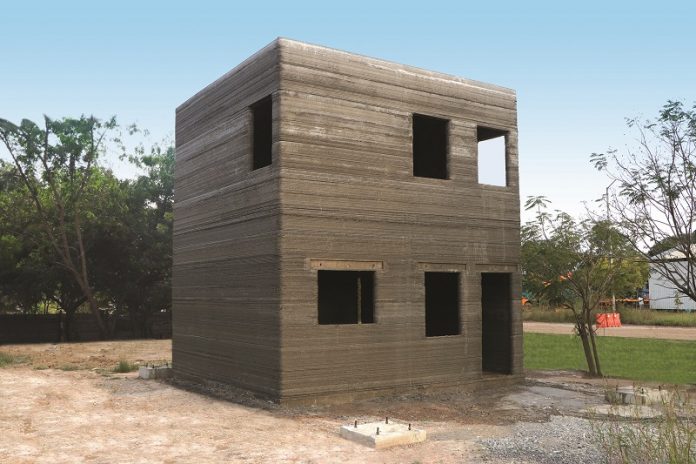Claimed to be India’s first, the structure near Chennai complies with Indian building codes. L&T developed the printable concrete mix in-house, based on locally available materials.
L&T senior executive vice president MV Satish said: “3D concrete printing is one of the technology disruptors with the potential to radically redefine construction methodologies and I am extremely happy that by demonstrating our growing expertise in 3D printing, we are well-positioned to push the boundaries of automated robotic construction.”The printer was supplied by a Danish manufacturer, Cobod, whose printers have been used for 3D printing firsts in Germany and Africa.
Cobod said L&T’s use of conventional concrete was significant because to date most 3D printed buildings have been made with ready-mix mortars, which have a maximum particle size of 4mm and are generally more expensive less strong than concrete. This can make structures printed with mortars fall foul of countries’ building codes, Cobod said.
“L&T Construction’s project marks a huge step forward for our industry, on a global scale,” said Cobod founder Henrik Lund-Nielsen.
“Not only is the project showing that more and more conventional construction companies are adopting 3D printing, but the 3D printing of a real concrete made by L&T themselves is significant, as this helps to drive down the cost even further. It is really impressive how L&T developed the 3D printable concrete and applied integral horizontal and vertical reinforcement in the building.”

